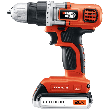Dealing With Water Stained Walls
Written by Lee Wyatt (last updated September 16, 2020)
There are all kinds of reasons and causes for water stains to form on your walls. While the most common reasons may be things like leaks in your pipes, problems with your windows, or even floods, there are many other causes out there. Whatever the reason, you will need to figure out some methods for dealing with water stained walls. Luckily, many of those methods are the same regardless of what the cause is. Here are some guidelines that you can use to ensure that you are dealing with the problem quickly, and efficiently.
- Check the problem. Whenever you find a water stain on your wall, you need to identify what caused it as soon as possible. The reason for this is rather simple in that a water stain is usually indicative of a larger problem, and one that could potentially cause you a lot of money and time to fix if you don't take care of it right away. At the very least, if you don't' identify the problem, and fix it as soon as possible, whatever else you may do to deal with the water stain will end up being only a temporary measure, and one that you will have to repeat over and over again.
- Paint over. One method that you could use for dealing with water stained walls is to paint it over. Keep in mind that this particular method will only work if the water stained isn't all that bad. Ideally, this method is one that you will want to use if the stain isn't all that large (for example around the size of a fifty cent piece). The reason that you really only want to use this method on a small stain is that occasionally water stains will bleed through new paint jobs, and this way you won't end up wasting a lot of paint (or time) if that happens to you.
- Spot repair. An extremely effective method for dealing with water stained walls is to spot repair the area or areas that are stained. This will require that you remove the damaged sheet rock, and then finish and repaint it when you have replaced it. Often times, when this method is chosen it can be difficult to match the new paint with the existing paint so you may want to repaint the entire wall that you are repairing.
- Replace the wall. If you are faced with a particular large water stain on the wall, then you may want to look into simply replacing the existing wall. Granted, this particular method will require a lot of work on your part, in removing the damaged wall, replacing it, tapping, mudding, priming, painting, and then cleaning everything up. That being said, this method is guaranteed to remove the water stain (as long as you have also fixed whatever was causing the stain to begin with).
Keep in mind that the methods, or guidelines, listed here are only a few of the more common methods available for you to deal with water stained walls. Basically, what that means is that you start with these, and if they don't work to your satisfaction, you can always experiment more. One of the more dramatic, and expensive, alternatives that you have available is to use the water staining of your walls as the excuse to do a complete remodel of that particular room. Granted it is dramatic and expensive, but it also guaranteed to work.
Author Bio
Lee Wyatt
Contributor of numerous Tips.Net articles, Lee Wyatt is quickly becoming a regular "Jack of all trades." He is currently an independent contractor specializing in writing and editing. Contact him today for all of your writing and editing needs! Click here to contact. Learn more about Lee...
Testing for Lead Paint
While everyone may know that lead based paint isn't exactly the best, do you know why testing for lead paint is so ...
Discover More
Using Area Rugs to Maximum Effect
When used properly area rugs are a great way to help add accent and comfort to just about any room. However, most people ...
Discover More
Planning a Picnic
When the weather is right, there is nothing better than a picnic. However, do you know how to go about planning a picnic ...
Discover More
More Home Improvement Tips
Hanging Pictures on Masonry Walls
There are several areas of most homes that often go bare simply because we don't know how to hang pictures on them. ...
Discover More
Hanging Pictures with Style
Everyone can hang pictures on their wall, but not everyone can do it with style. Surprisingly hanging pictures with style ...
Discover More
Finding Studs in Walls
Sometimes it's not easy to locate studs since they are mostly concealed behind plaster and other parts of the wall. While ...
Discover More

Comments